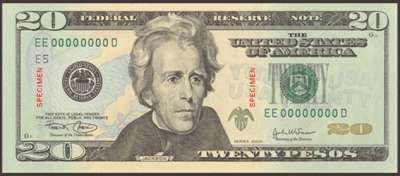
Next Year’s 20 Peso bill
Mises Economics Blog: The American Peso
Where the dollar has failed is as a store of value. Since 1960 the dollar has fallen by around two-thirds against the euro (using Germany’s currency as a proxy before 1999) and the yen (see chart 1). The euro area, unlike America, is a net creditor. Never before has the guardian of the world’s main reserve currency been its biggest net debtor. And a debtor may be tempted to use devaluation to reduce its external deficit — hardly a desirable property for a reserve currency.
Those bearish on the dollar are asking why investors will want to hold the assets of a country that has, by its own actions, jeopardised its reserve-currency position. And, they point out, without the intervention of central banks, which have been huge net buyers of dollars, the dollar would already be lower. If those same central banks were to begin to sell some of their $2.3 trillion dollar assets, then there would be a risk of a collapse in the dollar. However you look at it, America is likely to find it increasingly hard to finance its huge current-account deficit.
Related links:
Get an American Express Peso Card here















The peso has never been know for its strength.
It’s no secret that many Arab countries are P.O.’d at America but what few Americans seem to know (or care about) is that some people over here are advocating that the Euro — not the dollar — be the oil currency. Do you have any idea what this simple and legal move could do to America?
This is why I sometimes wonder if some of the people in charge of this country are even human, if they care one lick about anybody besides themselves. Sickening.